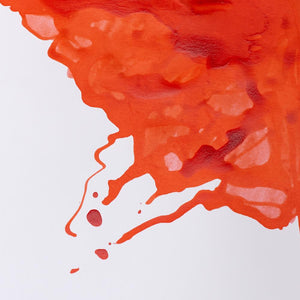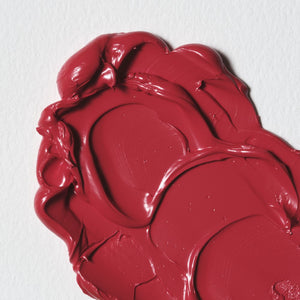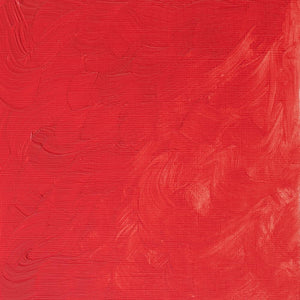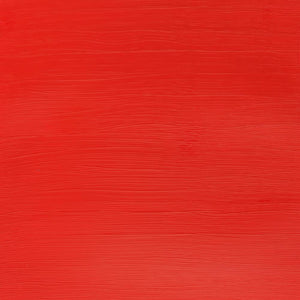
The brilliant and distinctive orange-red vermilion has been used across the world for thousands of years. From art and decoration in Ancient Egypt, China and Rome through to the manuscripts of the Middle Ages and the paintings of the Renaissance, vermilion in its purest state is concocted from cinnabar. Today, the synthetic alternative is widely used, in design and cosmetic products ranging from restoration artwork to henna makeup, ceremonial garments and car and household paints.
The origins of vermilion
The word ‘vermilion’ comes from the French vermeil, which refers to any red dye. Naturally occurring vermilion is an opaque, bright orange-red pigment originally derived from powdered mineral cinnabar. The ore of cinnabar contains mercury, making vermilion toxic. This meant that many of the miners in ancient times who extracted the ore paid a high price – some losing their lives.
China red
China is thought to have synthesised vermilion from mercury and sulphur – the earliest known description of this process dates from the 8th century. It became known as ‘China red’, and its impact was vast. The colour became a symbol of nobility, seen in the red lacquers used to paint royal palaces and red calligraphic ink reserved for emperors. It was also a colour that citizens saw in everyday life – vermilion was used in printing pastes for personal name stamps.
The evolution of a costly colour
Vermilion was equally revered by the Romans, who used the colour to paint the faces of their triumphant generals. These were to match the vermilion visage of the image of Jupiter Capitolinus in the temple on the Capitoline Hill. Because pure cinnabar was so rare, vermilion became immensely expensive. The price had to be fixed by the Roman government at 70 sesterces per pound – ten times the price of red ochre at the time.
Vermilion continued to be a highly expensive and sought-after colour into the 12th century, despite its evolution into synthetic vermilion. During the 14th century, the technique for synthesising it became more widespread. Due to the repeatability and control over the process, synthetic vermilion was regarded early on as superior to the vermilion pigment derived from natural cinnabar. Its popularity in Europe meant that it once cost as much as gilding a piece in gold, used mostly to illuminate manuscripts, featuring in illuminating kits available from the early to mid-19th century.
Developments both good and bad
Inspired by the past, the Dutch method of manufacturing vermilion was used from the 17th century. Looking back over the centuries, they based their techniques on those adopted in Ancient China. Mercury and melted sulphur were mashed to make black mercury sulphide, which was then heated in a retort, giving off vapour. When the vapour condensed it produced a bright-red crystalline form. This was scraped off and treated with a strong alkali solution to remove sulphur, and a final pigment was produced after washing and grinding the substance underwater.
By the mid-19th century, Chinese vermilion was once again considered the purest form, especially when compared to the European variety of the time. To avoid the high cost of cinnabar, Europeans instead cut cheaper materials such as brick dust, orpiment, iron oxide, Persian red, iodine scarlet and red lead. The result was detrimental to artists’ colours, as it frequently made the final pigment unstable.
Vermilion today
The art world’s interest in vermilion declined during the 20th century due to its cost and toxicity. Cadmium red, with its equally strong colour and opacity, became a popular alternative. Culturally, however, vermilion has immense significance today. Hindu women use vermilion known as sindoor along their hair parting to signify that they are married, while Hindu men often wear vermilion on their forehead during religious ceremonies. It is also significant in Taoist culture, where it is regarded as the colour of life and eternity.
Vermilion pigment is still mostly synthesised by reacting mercury with molten sulphur. Naturally produced vermilion is most likely to come from cinnabar mined in China, bringing the colour’s journey full circle, from China to Europe and back again.





![WN PWC KAREN KLUGLEIN BOTANICAL SET [FRONT]](http://www.winsornewton.com/cdn/shop/files/136444.jpg?crop=center&v=1740654068&width=20)
![WN PWC KAREN KLUGLEIN BOTANICAL SET [OPEN 2]](http://www.winsornewton.com/cdn/shop/files/136447.jpg?crop=center&v=1740654068&width=20)
![WN PWC ESSENTIAL SET [FRONT]](http://www.winsornewton.com/cdn/shop/files/137583.jpg?crop=center&v=1740762356&width=20)
![WN PWC ESSENTIAL SET [OPEN]](http://www.winsornewton.com/cdn/shop/files/137581.jpg?crop=center&v=1740762356&width=20)
![W&N GALERIA CARDBOARD SET 10X12ML [B014096] 884955097809 [FOP]](http://www.winsornewton.com/cdn/shop/files/138855.jpg?crop=center&v=1740761853&width=20)
![W&N GALERIA CARDBOARD SET 10X12ML 884955097809 [OPEN]](http://www.winsornewton.com/cdn/shop/files/138856.jpg?crop=center&v=1740761853&width=20)

![W&N PROMARKER 24PC STUDENT DESIGNER 884955043295 [FRONT]](http://www.winsornewton.com/cdn/shop/files/78674_d4d78a69-7150-4bf4-a504-3cb5304b0f80.jpg?crop=center&v=1721326116&width=20)

![W&N PROFESSIONAL WATER COLOUR TYRIAN PURPLE [SWATCH]](http://www.winsornewton.com/cdn/shop/files/136113.jpg?crop=center&v=1724423390&width=20)
![W&N WINTON OIL COLOUR [COMPOSITE] 37ML TITANIUM WHITE 094376711653](http://www.winsornewton.com/cdn/shop/files/9238_5073745e-fcfe-4fad-aab4-d631b84e4491.jpg?crop=center&v=1721326117&width=20)
![W&N WINTON OIL COLOUR [SPLODGE] TITANIUM WHITE](http://www.winsornewton.com/cdn/shop/files/131754_19b392ee-9bf6-4caf-a2eb-0356ec1c660a.jpg?crop=center&v=1721326118&width=20)